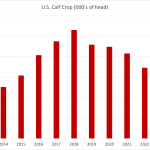Fusarium head blight, a disease that has ravaged wheat and barley crops
in the Red River valley, has been found at high levels in Manitoba oats
crops.
It could become a serious problem for next year’s oats growers, said
Agriculture Canada plant disease specialist Andy Tekauz.
“Fusarium head blight is an important crop disease in oats in
Manitoba,” said Tekauz.
“We will need to redirect our oat breeding program to address this
issue.”
Read Also

Canola used in only quarter of Canadian biofuel
Less than one-quarter of the biodiesel and renewable diesel used in Canada in 2024 was made from canola oil feedstock
Wheat and barley growers can find fusarium by tearing apart the plant
heads and looking for damaged kernels. That won’t work in oats, Tekauz
said, because kernel damage is less visible. Perhaps only one in 10,000
will be obviously damaged.
“Most growers are still not aware that this is a problem in oats,
because unlike in wheat and barley, fusarium head blight is very
difficult to see. You don’t see any obvious sign of disease,” said
Tekauz.
Fusarium can damage an oats crop’s germination and emergence rates. A
farmer planting an infected crop probably won’t know it’s infected, and
won’t realize that his poor germination and emergence rates are due to
the blight.
Tekauz said since farmers can’t effectively scout their fields for an
infected crop, they must rely on forecasting models developed by
disease experts.
However, experts don’t know yet whether some of the treatments used to
control fusarium in wheat and barley will work in oats.
The good news for growers is that the fusarium that makes infected
crops toxic to livestock is broken down by the milling process used for
human consumption. That means oats crops grading highly may not be hurt
by the surprising prevalence of fusarium.
But livestock feeders buying the crop should test more oats deliveries,
Tekauz said.
“It may have to be tested routinely.”
Tekauz said some oats varieties appear to be more resistant to
fusarium. He and other disease specialists will try to identify
resistant varieties and pass the information along to farmers.
“There’s always a chance that this is a flash in the pan, that 2002
represents a worst case scenario,” said Tekauz.
“But based on our experience with wheat and barley, it’s more likely
we’re going to have to live with the problem and minimize it.”

















